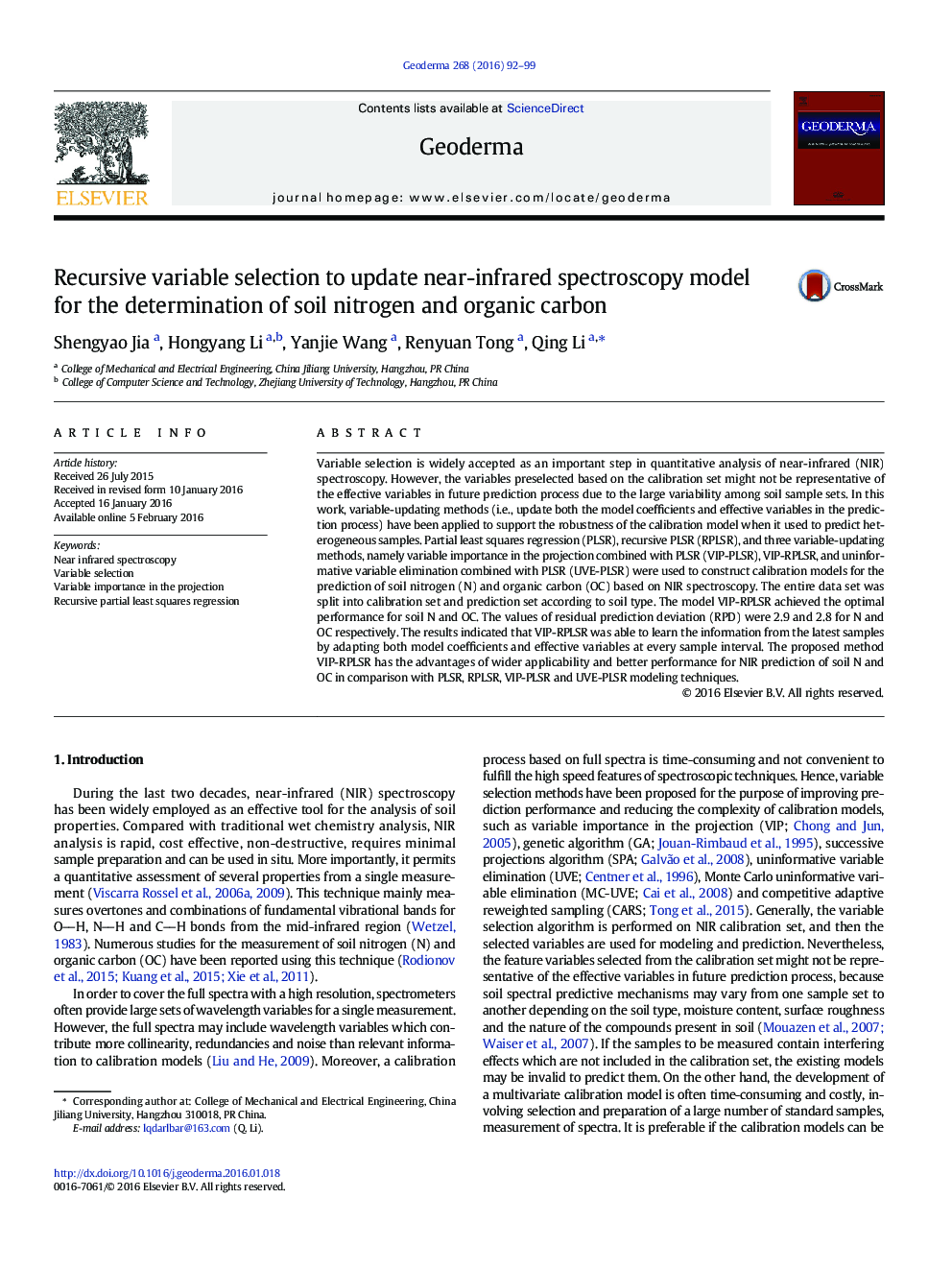| کد مقاله | کد نشریه | سال انتشار | مقاله انگلیسی | نسخه تمام متن |
|---|---|---|---|---|
| 4573030 | 1629449 | 2016 | 8 صفحه PDF | دانلود رایگان |
• Variable-updating methods have been proposed to support the robustness of the near-infrared spectroscopy model.
• Variable-updating method is able to learn the information from the latest samples by updating model structure.
• The VIP-RPLSR model has the advantages of wide applicability and good performance for NIR prediction of soil N and OC.
Variable selection is widely accepted as an important step in quantitative analysis of near-infrared (NIR) spectroscopy. However, the variables preselected based on the calibration set might not be representative of the effective variables in future prediction process due to the large variability among soil sample sets. In this work, variable-updating methods (i.e., update both the model coefficients and effective variables in the prediction process) have been applied to support the robustness of the calibration model when it used to predict heterogeneous samples. Partial least squares regression (PLSR), recursive PLSR (RPLSR), and three variable-updating methods, namely variable importance in the projection combined with PLSR (VIP-PLSR), VIP-RPLSR, and uninformative variable elimination combined with PLSR (UVE-PLSR) were used to construct calibration models for the prediction of soil nitrogen (N) and organic carbon (OC) based on NIR spectroscopy. The entire data set was split into calibration set and prediction set according to soil type. The model VIP-RPLSR achieved the optimal performance for soil N and OC. The values of residual prediction deviation (RPD) were 2.9 and 2.8 for N and OC respectively. The results indicated that VIP-RPLSR was able to learn the information from the latest samples by adapting both model coefficients and effective variables at every sample interval. The proposed method VIP-RPLSR has the advantages of wider applicability and better performance for NIR prediction of soil N and OC in comparison with PLSR, RPLSR, VIP-PLSR and UVE-PLSR modeling techniques.
Journal: Geoderma - Volume 268, 15 April 2016, Pages 92–99
